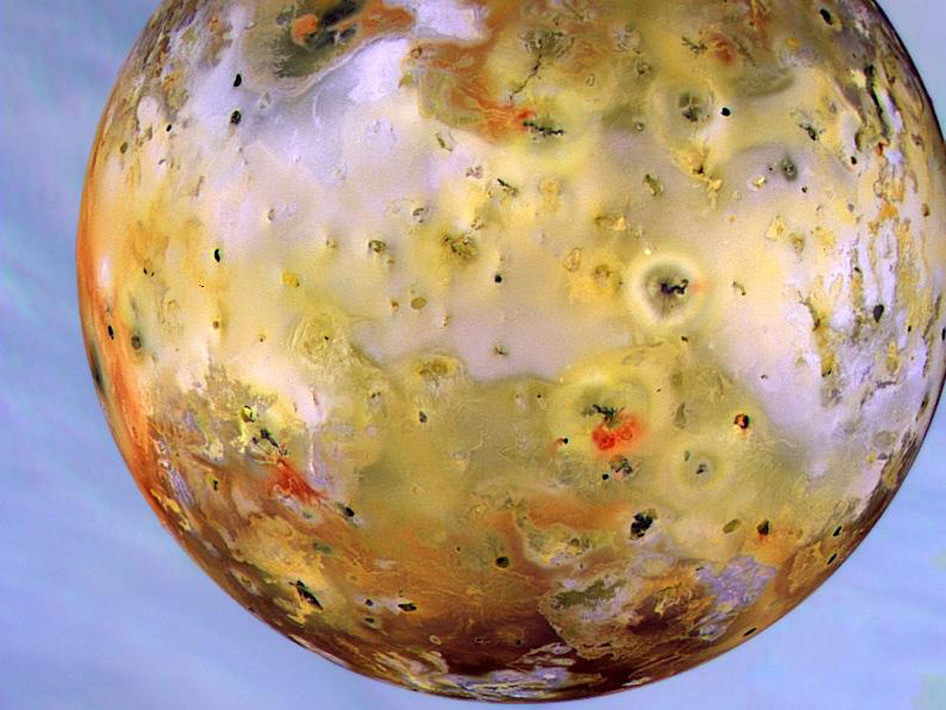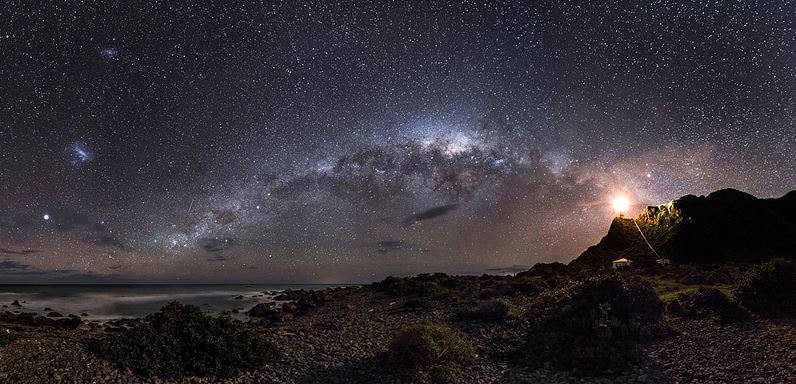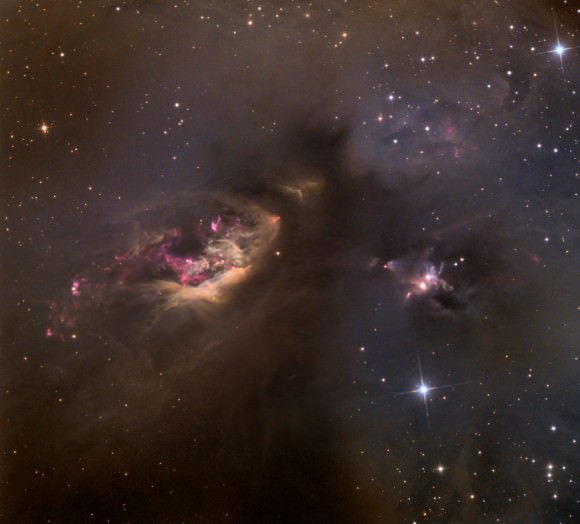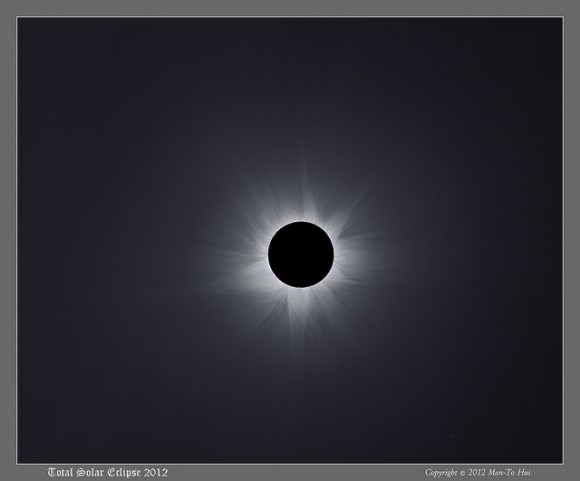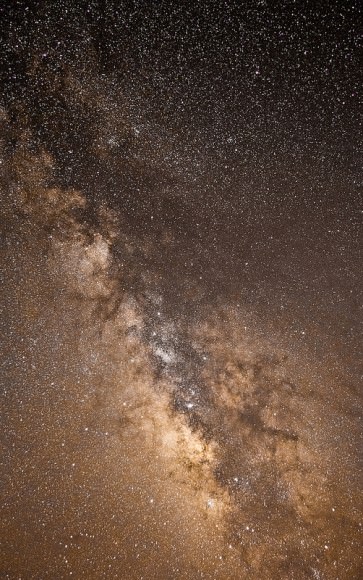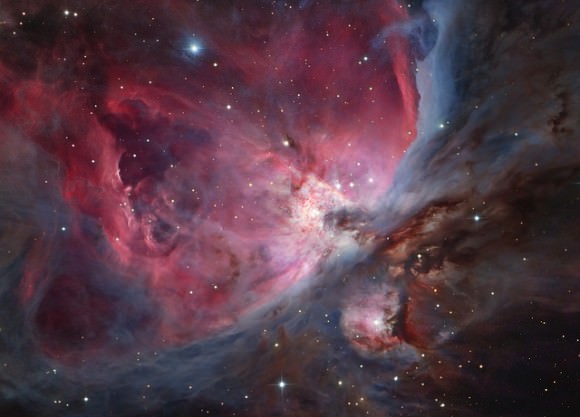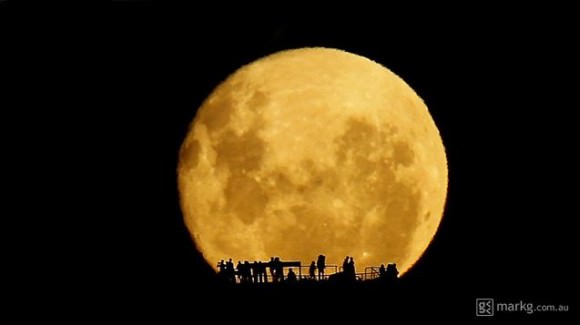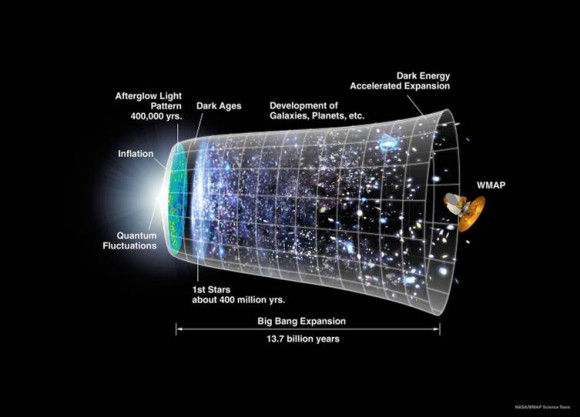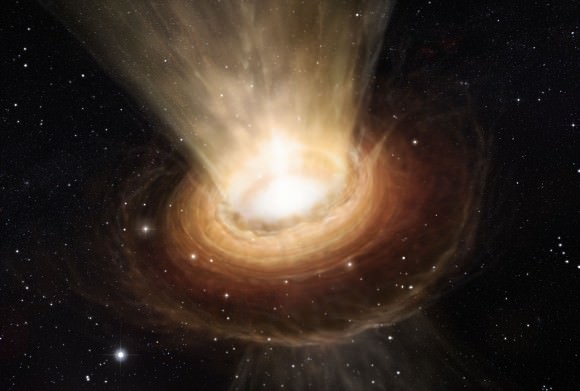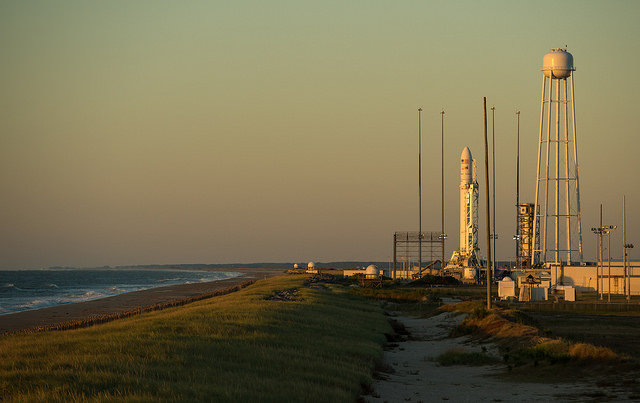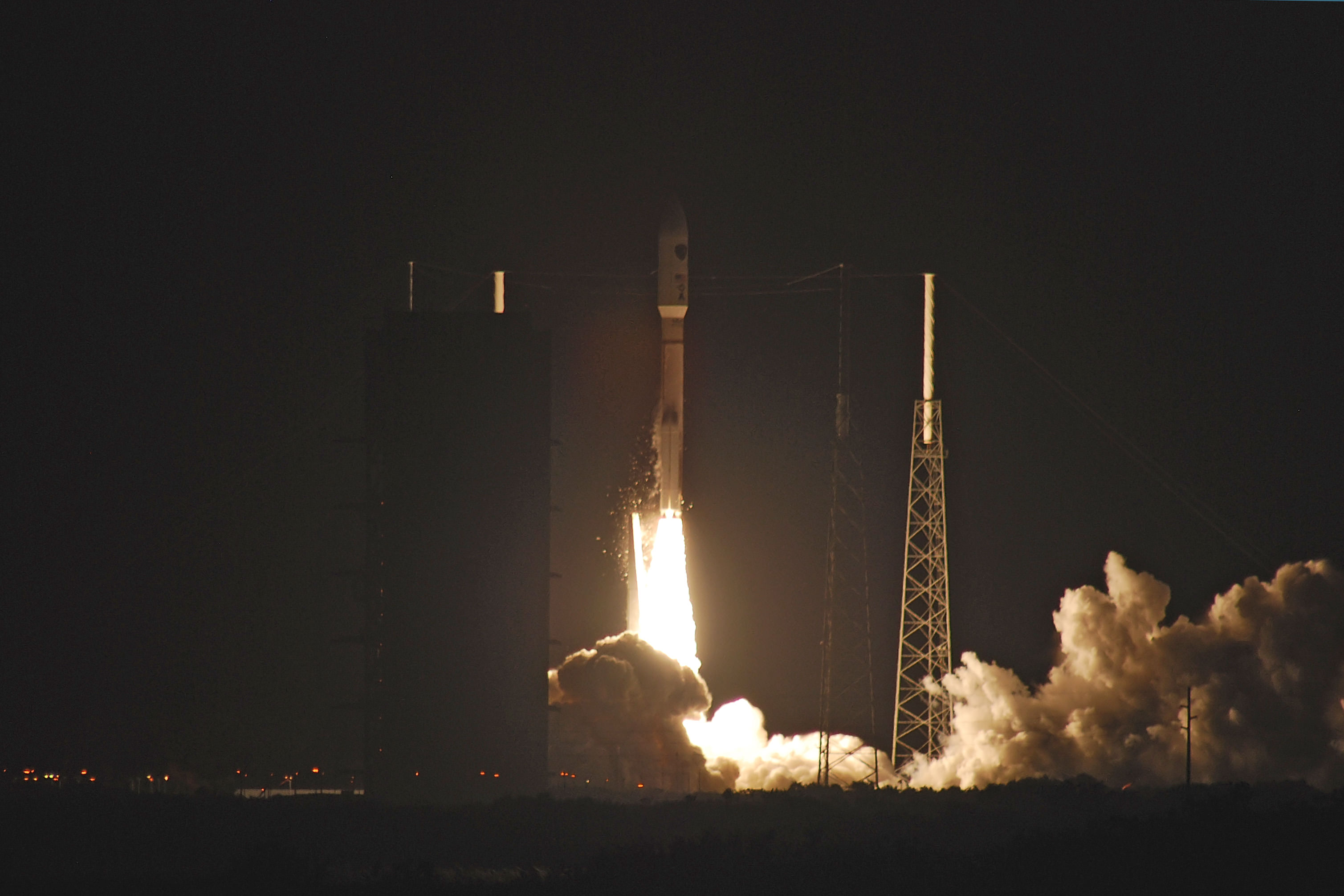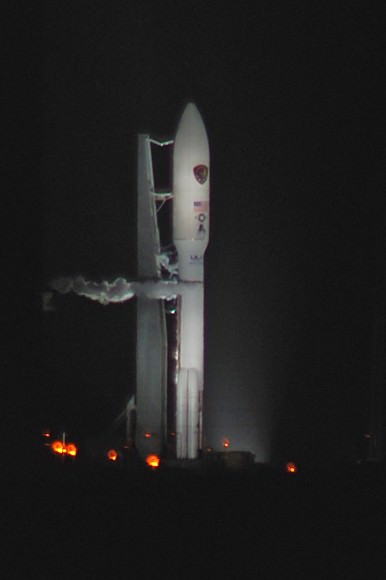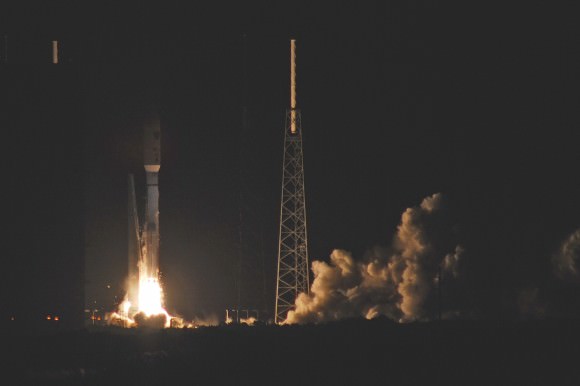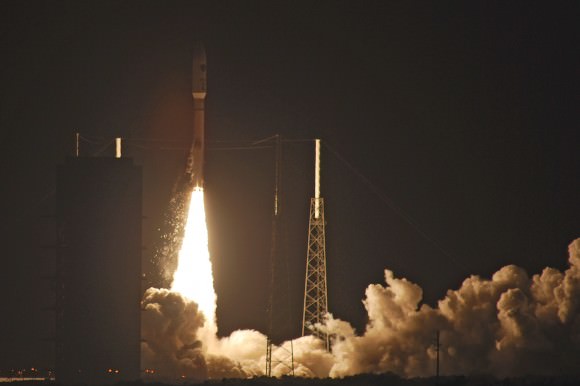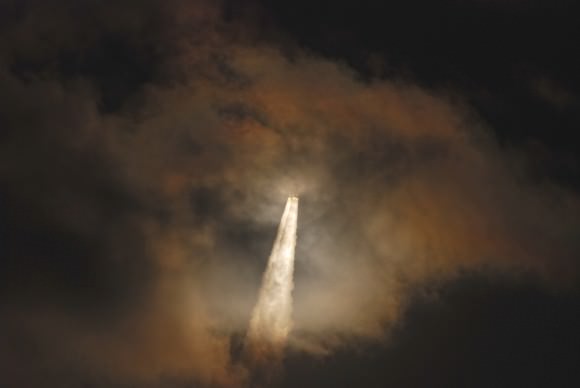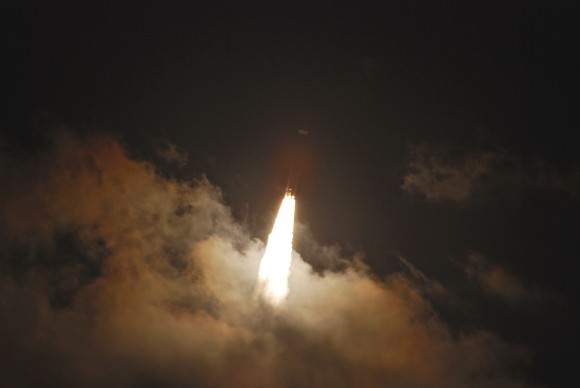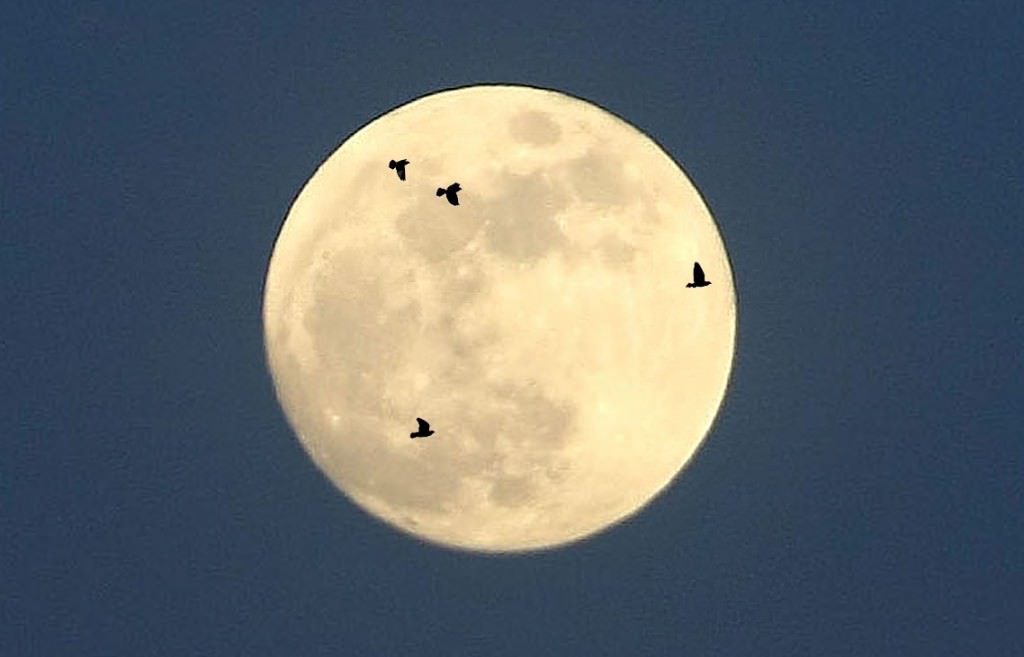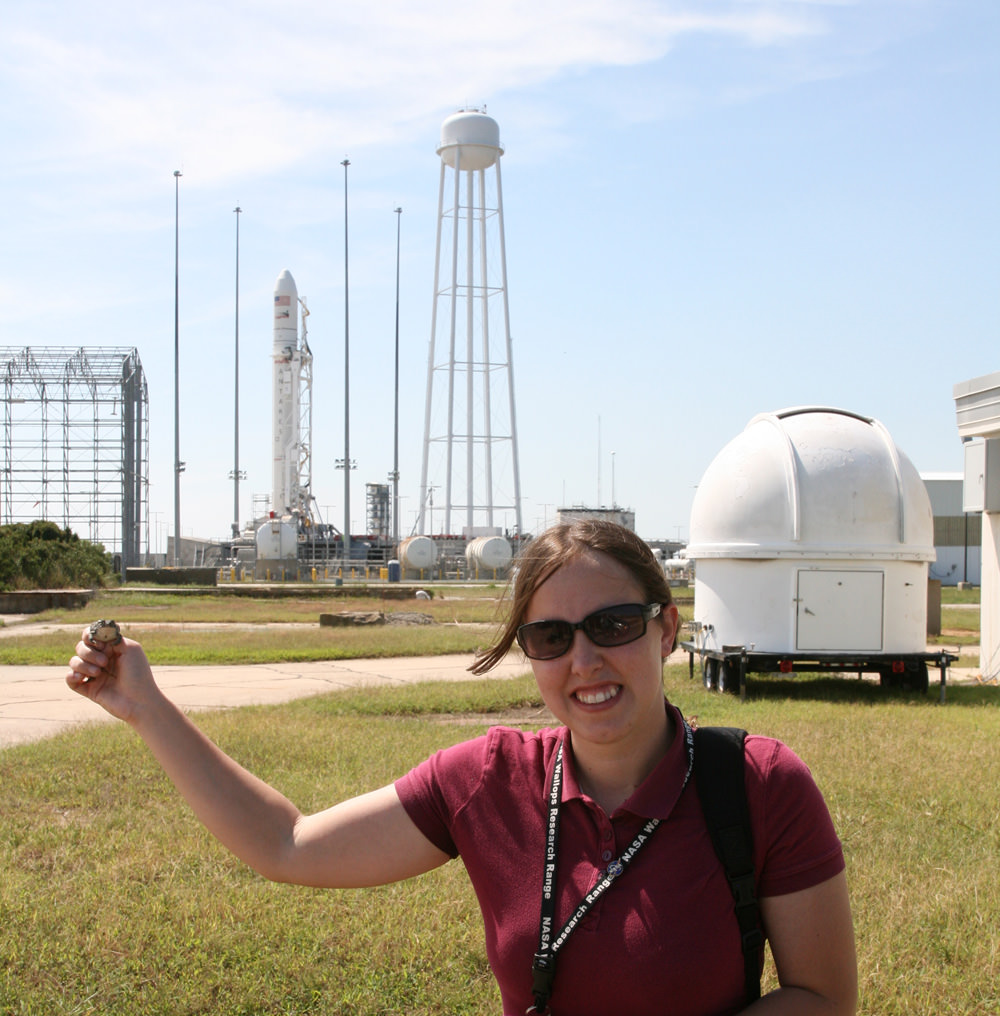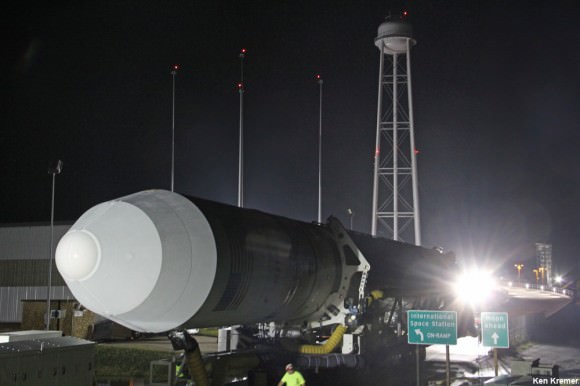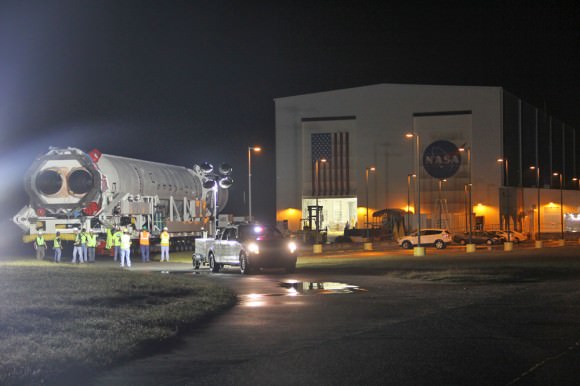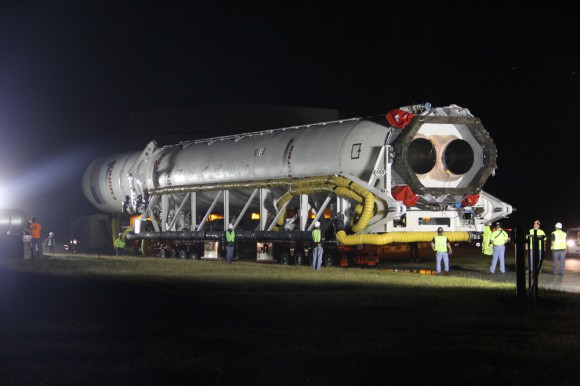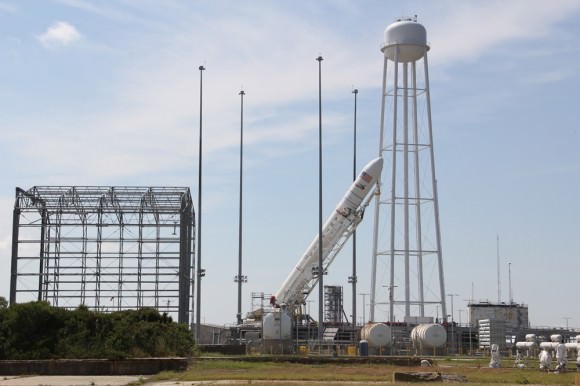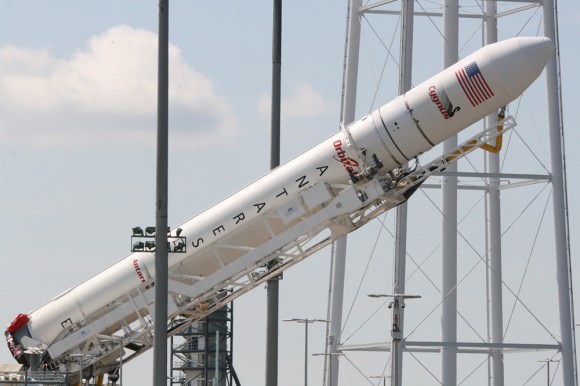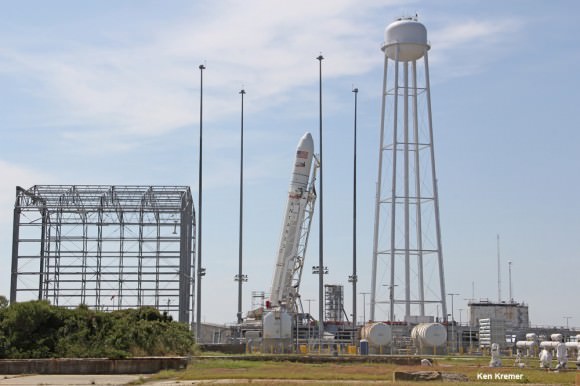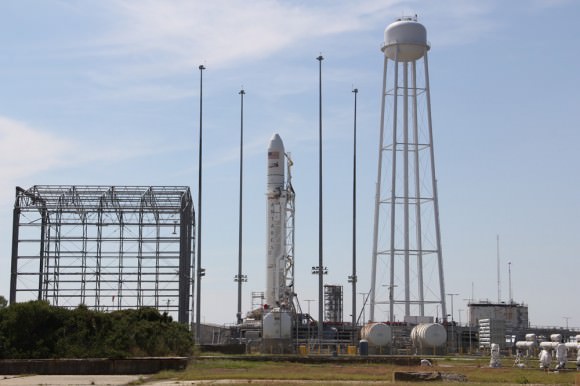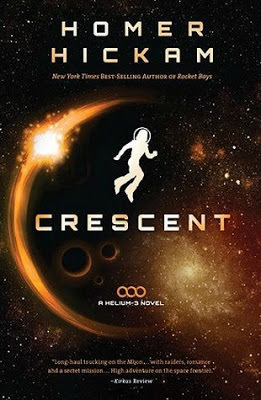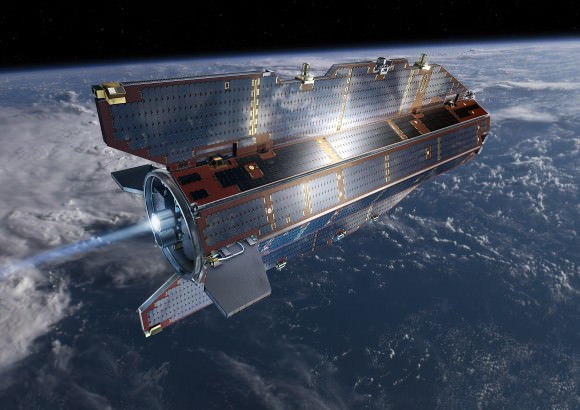Io – Jupiter’s innermost Galilean moon – is the most geologically active body in the Solar System. With over 400 active volcanic regions, plumes of sulfur can climb as high as 300 miles above the surface. It is dotted with more than 100 mountains, some of which are taller than Mount Everest. In between the volcanoes and mountains there are extensive lava flows and floodplains of liquid rock.
Intense volcanic activity leads to a thin atmosphere consisting mainly of sulfur dioxide (SO2), with minor species including sulfur monoxide (SO), sodium chloride (NaCl), and atomic sulfur and oxygen. Despite Io’s close proximity to the Earth the composition of its atmosphere remains poorly constrained. Models predict a variety of other molecules that should be present but have not been observed yet.
Recently a team of astronomers from institutions across the United States, France, and Sweden, set out to better constrain Io’s atmosphere. They detected the second-most abundant isotope of sulfur (34-S) and tentatively detected potassium chloride (KCl). The latter is produced in volcanic plumes – suggesting that these plumes continuously contribute to Io’s atmosphere.
Expected yet undetected molecular species include potassium chloride (KCl), silicone monoxide (SiO), disulfur monoxide (S2O), and various isotopes of sulfur. Most of these elements emit in radio wavelengths.
“Depending on their geometry, some molecules emit at well known frequencies when they change rotational state,” Dr. Arielle Moullet, lead author on the study, told Universe Today. “These spectral features are called rotational lines and show up in the (sub)millimeter spectral range.”
These observations were therefore obtained at the Atacama Pathfinder Experiment (APEX) antenna – a radio telescope located 16,700 feet above sea level in northern Chile. The main dish has a diameter of 12 meters, and is a prototype antenna for the Atacama Large Millimeter Array (ALMA).
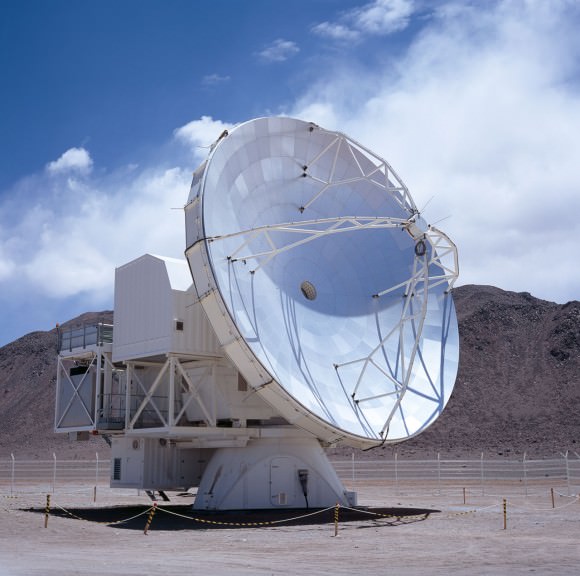
Following 16.5 hours of total observation time and months of data reduction and analysis, Moullet et al. made a tentative detection of potassium chloride (KCl). Io’s volcanic ejecta produce a large plasma torus around Jupiter, which inlcudes many molecular species including potassium. This detection is therefore considered the “missing link” between Io and this plasma torus.
The team also made the first detection of one of Sulfur’s isotopes known as 34-S. Sulfur has 25 known isotopes – variants of sulfur that still have 16 protons but differ in their number of neutrons. 34-S is the second most abundant isotope with 18 neutrons.
Previously, the first-most abundant isotope of sulfur, 32-S with 16 neutrons, had been detected. Surprisingly the ratio between the two (34/32 S) is twice as high as the solar system reference, suggesting that there is an abundance of 34-S. A fraction this high has only been reported before in a distant quasar – an early galaxy consisting of an intensely luminous core powered by a huge black hole.
“This result tells us that there probably is some fractionation process that we haven’t yet identified, which is happening either in the magma, at the surface, or in the atmosphere itself,” explains Dr. Moullet. Something somewhere is producing an unexplained abundance of this isotope.
Other expected yet undetected molecules including silicone monoxide and disulfur monoxide remain undetected. It is possible that these molecules are simply not present, but more likely that the observations are not sensitive enough to detect them.
“To perform a deeper spectral search with a better sensitivity, our group has been awarded observation time with the Atacama Large Millimeter Array, a cutting edge interferometric facility in Chile, which will eventually include more than fifty 12-meter wide dishes,” explains Dr. Moullet. “We are in the process of analyzing our first dataset obtained with sixteen antennas, which is already much more sensitive than the APEX data.”
While Io is certainly an extreme example, it will likely help us characterize volcanism in general – providing a better understanding of volcanism here on Earth as well as outside the Solar System.
The paper has been accepted for publication in The Astrophysical Journal and is available for download here.

